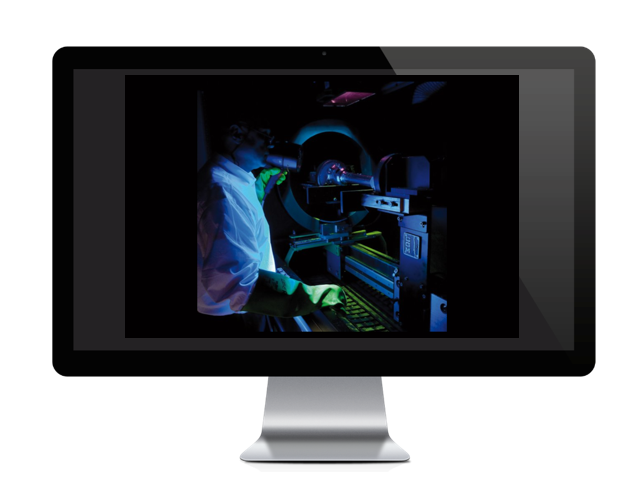I. Overview
Non-destructive testing used in the aerospace industry, including fluorescent penetrant testing and fluorescent magnetic particle testing, has high requirements on all aspects of the process. It took five years for the ASTME3022 standard to be issued for the specification of LED black light used in aerospace testing. In order to meet high standard fluorescent magnetic particle and penetrant inspection requirements such as aerospace, the standard puts forward a series of standard performance requirements for black light manufacturers.

1. 365nm peak wavelength
ASTME3022-365nm peak wavelength, the ultraviolet light of this wavelength can excite the strongest fluorescence of most permeable fluorescent dyes.
2. Maximum irradiance
ASTME3022 - Maximum Irradiance: Fix the black light at 381±6mm above the plane. The surface of the horizontal table is perpendicular to the projected beam of the lamp. The lamp surface is parallel to the work surface, and the parallelism is within ±6mm. Make sure the battery powered light is fully charged. Turn on the light and let it stabilize for 5 minutes. Place a standard-compliant UV-A radiometer on the bench. Adjust the position of the lamp so that the distance from the sensor probe face of the filter radiometer of the lamp is 381±6mm. Scan the probe of the radiometer across the projected beam in two vertical directions to find the maximum irradiation point, and this record is the maximum illuminance value.
3. Beam profile/irradiation area
The irradiation range of the LED black light refers to the area obtained by measuring the range where the irradiance on the irradiated surface is higher than the minimum 1000μw/cm2 required for flaw detection.
The measurement method is the same as the maximum irradiance of ASTME3022. The distance between the black light lamp and the UV-A radiometer is fixed (381mm±6mm). After finding the maximum irradiance point, the position is taken as the 0 point. Using a 12.7mm grid, the radiometer probe was moved and measured in 12.7mm increments to generate a 2D map of the beam profile for a given irradiance and relative position.
4. Visible illuminance
RRES90061/AITM6-1001/ASTME3022--less than 20Lux.
5. Working distance
ASTME3022--Minimum working distance: refers to a certain distance from the lamp to the surface to be inspected. If it is less than this distance, the intensity distribution within the beam profile will show non-uniformity.
RRES90061--minimum/maximum working distance: refers to the two distances where the UV-A irradiance measured on the surface to be inspected is 5000μw/cm2 and 1200μw/cm2, respectively.
6. Filter
ASTME2297--UV-A light sources for non-destructive testing must have appropriate filters, either inside or outside the light source, to pass only UV-A and a minimal amount of visible light, which is not conducive to fluorescence detection. These UV-A filters should also block the passage of harmful UV-B and UV-C ultraviolet rays.
